The Royal Navy say here that they have pushed two different drone designs ‘to their limits’ in order to see how much utility they might have for front-line operations.
They say that both the Malloy Aeronautics T-600 quadcopter and Windracers Autonomous Systems’ Ultra drone “proved their abilities to carry heavy payloads of 100kg over long distance and more than 250kg over a shorter distance”.
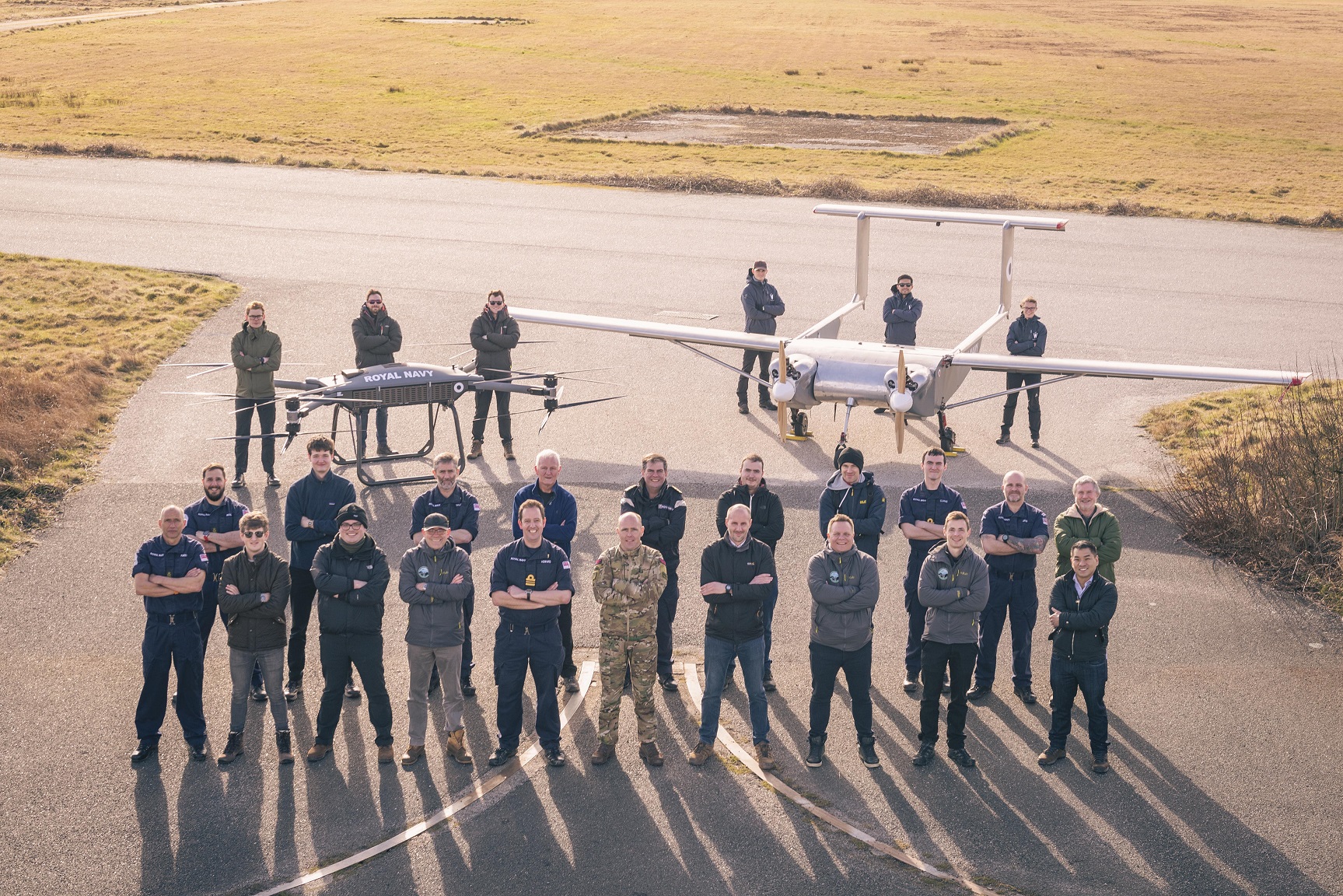
According to a news release:
“The aircraft impressed in the most recent trials which saw the Malloy T-600 fly with a 250kg payload while the fixed-wing Windracers Ultra dropped a 100kg payload 1,000km away to a platform replicating a Queen Elizabeth-class aircraft carrier flight deck. It was able to slow on approach and drop its package with pinpoint accuracy.”
Brigadier Dan Cheesman, Royal Navy Chief Technology Officer, was quoted as saying:
“The Heavy Lift Challenge is surpassing all our expectations. This is a genuine, game-changing collaboration between the Royal Navy, DE&S’ Future Capability Group and industry and has, so far, produced quite spectacular results – all inside the same commercial framework we are able to iterate as one-team. We are not there quite yet, but in perhaps as little as two months’ time, we will have the final ‘show don’t tell’ evidence we need to commence scaling to the hands of the warfighter at unprecedented pace.”
James Gavin, Head of the Future Capability Group, was also quoted:
“This an important milestone for the Heavy Lift Challenge. We have tested how scalable and usable the autonomous technology is, with promising results. We have demonstrated how our collaboration with the Royal Navy and industry partners can expedite the procurement process – enabling us to deliver cutting-edge technology at pace. Ultimately, this work will help the UK Armed Forces retain and grow its operational advantage and also deliver cost efficiencies.”
The Royal Navy Heavy Lift Challenge aims to increase the number of uncrewed aircraft systems available on the market. This is part of the overall Royal Navy effort to increase the usage of drones.
Alongside the above, carrier-based drones under ‘Project Vixen’ are also being considered for a range of missions including combat, aerial refuelling and airborne early warning but what could they look like?
According to an official Royal Navy publication, titled Future Maritime Aviation Force, which was originally published in December 2020, the Royal Navy aims to replace its helicopter-based airborne early warning (AEW) platform, the Merlin HM2 Crowsnest, with a fixed-wing UAV, currently known as Vixen, by 2030.
The Royal Navy also expects to utilise Vixen in surveillance, air-to-air refuelling, electronic warfare and strike roles. A slide from the publication shows that Vixen could be used for airborne early warning, strike, aerial refuelling and more.
You can read more about the aerial surveillance side of things by clicking here and the aerial refuelling aspect by clicking here.


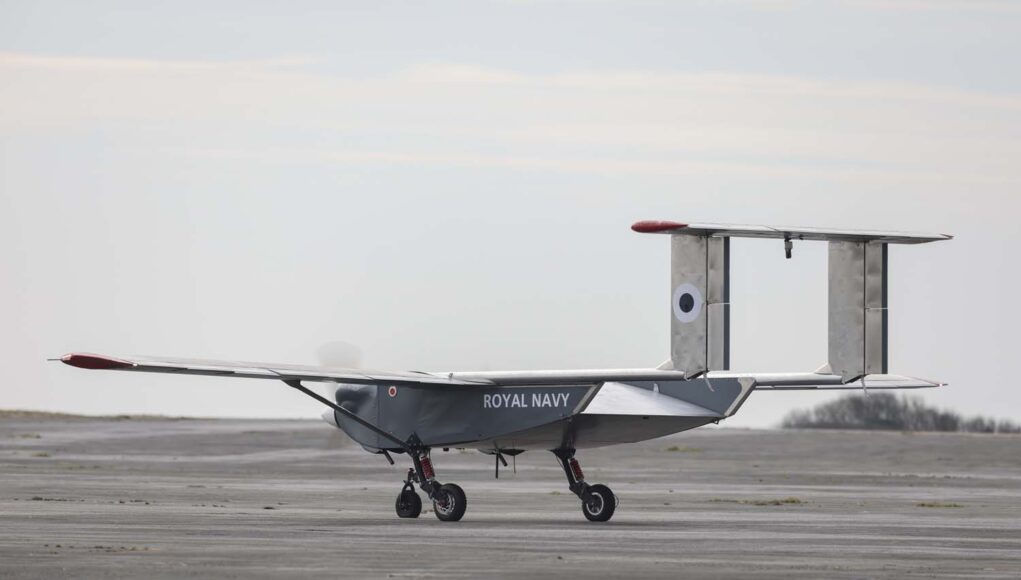
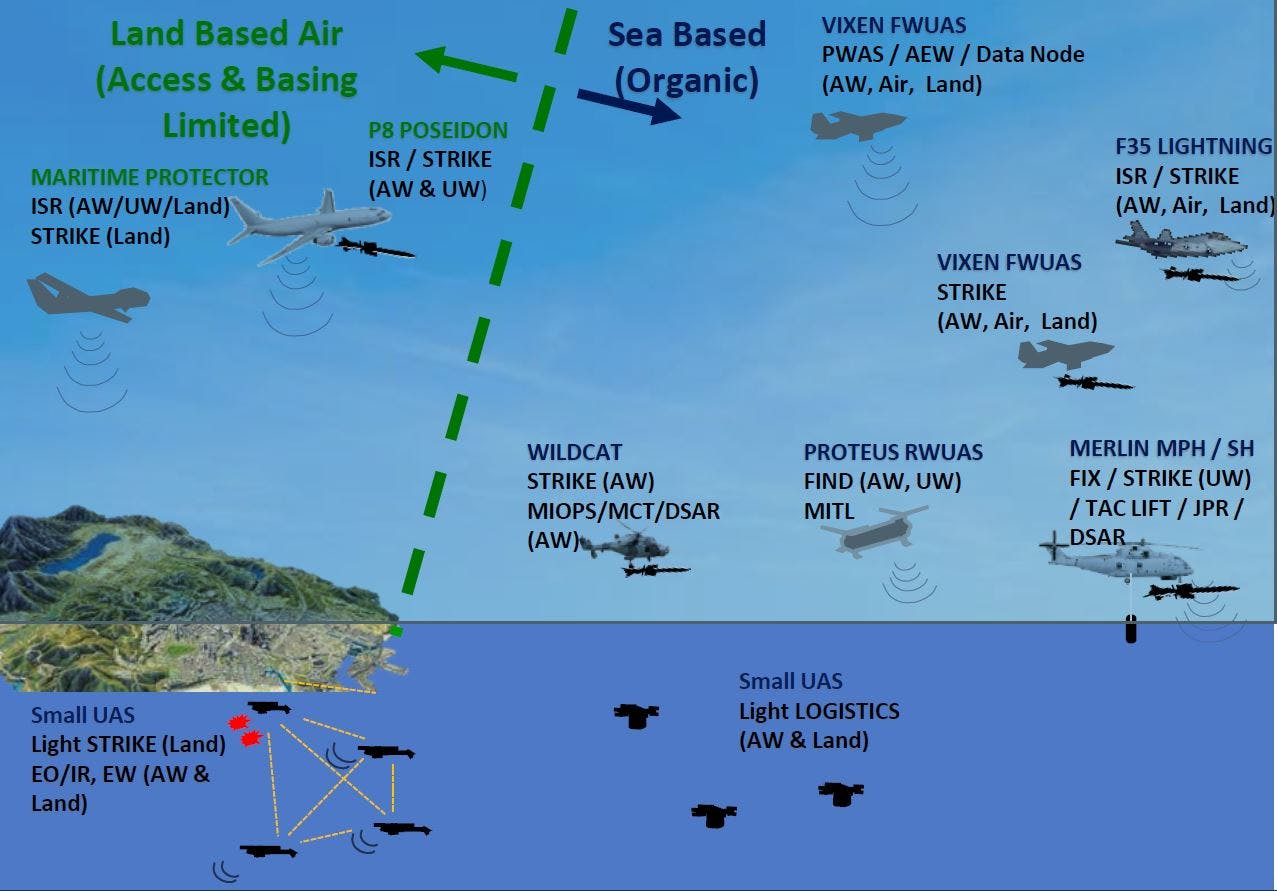

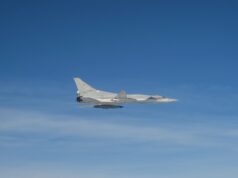


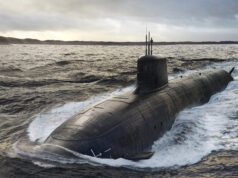
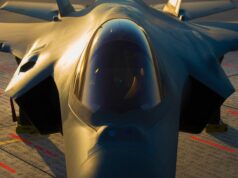
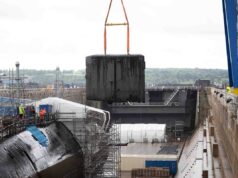
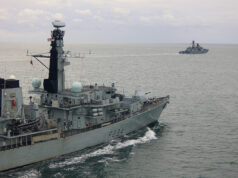
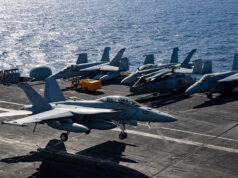


I think the concept is a great way to proceed and is potentially the answer to many questions. But whenever i see a UK Team doing it it just reminds me of a load of enthusiasts flying their remote controlled planes and helicopters in the park. The tech and will to do it have been around for ages, where’s the cold hard cash?
The problem is that if you started a MilSpec program to do heavy drone lift, commercial tech would have overtaken it before it had matured. Such is the pace of development.
What is **probably** really going on here is to test out the secure control systems on commercial platforms. That is where the military angle needs to come in. Other wise you just end up with stuff like the Russians have that anyone with half a brain and a bit of kit can defeat.
Thanks for that answer. The seemingly slow progress makes sense now.
These drones should prove very cost effective for resupply of surface vessels and surfaced submarines on the peripheries of a battle group and/or distant patrol routes.
out to 1000km range is impressive and going to prove cheaper than tasking a manned helicopter or Hercules A400M to deliver those supplies via a parachute drop.
The true effectiveness will be when there are dozens and dozens of these drones undertaking replenishment at sea.
Which then also adds the question of what alternative utility could these dozens and dozens of supply drones undertake? Could they have multimodal functionality so able to switch to a reconnaissance asset, surface strike or even a kamikaze role?
As sceptical as most of us have been, this bodes rather well for the T32 project as a high-tech drone platform. It appears designing ships to specialise in unmanned vehicles may be rather sensible.
That said, I can’t help thinking the RN would do better with a 2-3 small throughdeck support ships in this role instead. I doubt they would be particularly expensive, since they wouldn’t need the hanger and servicing facilities of a CV or even a helicopter carrier. Then we could have T32 as a slightly improved T31 batch 2 without sacrificing offensive capability.
Did you see the bae design a few years ago with 2 small runways down the hull.
https://u0v052dm9wl3gxo0y3lx0u44wz-wpengine.netdna-ssl.com/wp-content/uploads/2014/05/BAE-UVX.jpg
Wouldn’t a layout like a mini aircraft carrier with a through-deck make more sense? That would provide more deck space for air operations.
For a purpose-built UAV carrier, I think through deck would be better, but I love the idea of having a short angled runway on something like the T32 frigate.
I like that. We can even keep the 18″ on the foredeck and name them HMS Glorious, Courageous and Furious! Great for the Baltic too.
I remember that image but couldn’t find it again, its now starting to make sense looking at something like this. My concern is later politicians can the Carriers as they see these as replacements.
These are 8,000 ton ships. Nobody will see them as carrier relacements.
For future reference it was the BAE UXV Combatant. Also had a moon pool and flex deck.
https://en.wikipedia.org/wiki/UXV_Combatant
Excellent capabilities especially the slide, looks like covers all domains. Only questions really are how much? And can we afford to have literally hundreds of these or is it the usual dozen or so
I think the point is the more the shell and power plant/pack of it is COTS then the more that can be afforded.
But I agree that in a lot of roles a lot of pretty simple drones, appropriately modified, are probably better than a few crazily bespoked ones.
That said the electronics will need hardening and the comms will have to be secure and probably multi channel and agile as well as being able to switch to satellite comms if surface to air comms are interrupted or vice versa.
I wonder if they are considering hybrid or variable lift airships, which have the ability to carry 50 ton payloads (or more) for thousands of miles. I admit dropping 20 ft equivalent containers with pinpoint accuracy might be more of a challenge.
…hopefully they are, but problems like handling in strong-ish wind, lightning, storms, landing/take-off handling and excessive IR signature are tricky problems to overcome.
Iv dropped on this before, could have a fleet of them like thunderbird 2 dropping of iso containers made of a composite lightweight material straight onto the deck of surface ships. Here’s a company working on something that could be used.
https://www.varialift.com/page/the-varialift-airships.
People commenting on theyed be slow moving sitting ducks forget that supply ships are even bigger and slower moving. If there autonomous it could revolutionise the world’s shipping.
It has great stats, but I don’t think they’ve actually built anything yet. When reality hits, some of their statistics will be seen to be over optimistic.
If you look at the story of Hybrid Air Vehicles’ bid (along with US companies) for the US Army’s LEMV project, the airship turned out to be considerably heavier than the original design, cutting the days in the air from twenty one to four or five. But the commercial ten-ton lifter they salvaged from it (Airlander 10) certainly works. As they are going down the road of green electric engines, the proposed fifty-ton follow up won’t be able to stack up against the equivalent stats of the Varialift design, but it might be more accurate and come at a lower risk.
On the other hand variable lift technology is likely to be more appropriate to the Navy’s requirement than hybrid lift.
I’d love to see both of them trialled at the 50 ton size. Having a heavy lifter that can double as a backup AEW and can stay in the air for weeks at a time would certainly be advantageous. The knock on commercial benefits alone of a successful trial are worth the punt.
So many British drone programs have come and gone over the past decade and all we have ever done is purchase foreign drones. Sea Vixen and mosquito are vital to rebuilding mass for RAF and FAS but I just don’t see anything happening beyond yet more design studies.
Mosquito demonstrator is funded to the tune of £30m and is expected to have its first flight at some point in 2023. I think the idea is that Mosquito and Sea Vixen will be the same, just slightly modified for RAF and FAA use. It is moving forward.
Spirit Mosquito – Wikipedia
Taranis UCAV was funded to £185 million an produced nothing along with Mantis, Corax and HERTI. Anything at the MOD that does not have a billion in the tittle is little more than a design study. We have been studying UAV for 20 years and produced many pro types and never taken anything forward. I don’t see why the MOD would now change its tune and actually start developing hardware especially something as complicated as Sea Vixen and Mosquito. At best we might buy a couple of what ever the US comes up with in a decade or more.
The drone has to be a step forward not a tiny increment?
No point is spending gazillions making something you know will be obsolete in 5 years time. At that point buy COTS And modify.
Wouldn’t say Mantis resulted in nothing we collaborated with the French for a couple of years on UCAVs and then a Eurodrone appeared that looked just like Mantis 🙂
Yes abs much of Taranis may end up in the Franco German FCAS program.
UK was very good at limiting tech transfers from Taranis when we were co-operating with the French…
I don’t agree, the US has been prototyping drones of this nature and testing very advanced AI based vehicles since the 90s yet very little has seriously reached service as yet, Northrop, despite winning awards have had nothing accepted into service esp in a strike role and only a tanker is presently in the pipeline for service in the Navy by Boeing. Yes they are now committed (again) for both army, Air Force and navy with these high end drones beyond that but are still some way off.
Meanwhile the Australian Boeing loyal wingman seems to be coming along well now and this is the sort of thing that we seem to be aiming to achieve a few years behind admittedly. So yes we aren’t exactly leaders in bringing these things into service but we don’t seem that far behind those leaders either, Teranis and Magna were never meant to be operation ready vehicles, just essentially adding to the knowledge base to see when they might become mature enough, I can’t see such advanced drones being seen before the 30s when AI is more mature however. Where I do feel we have lapsed is seeing the usefulness in the far simpler Baykar type drone technology but then we aren’t the only ones as they are both effective and ineffective depending upon the situation of battle, far better in defending your space apparently than attacking your opponents Space and as defences get better this will only get more difficult for them so if we get them an off the shelf system would be better.
Where there is reaper, global hawk and triton as major programs that are publicised however there is also likely a number of black programs potentially operating drones that we don’t even know about RQ180 and RQ 170 appear to be confirmed in operation. In addition they have MQ25 in actual product development. In the same period we did zero.
A little bit of ambition we could have easily have had mantis instead of reaper/ guardian and we could have developed Taranis into a deep strike persistent recon platform and it could all have been done for pennies.
Add in the MQ-8 series helos and Predator C (the stealth jet powered version, MQ-20 Avenger) is in service. The CIA bought at least 7…
The Boeing drone is already conducting test air to air refuelling of F35s.
“the US has been prototyping drones of this nature and testing very advanced AI based vehicles since the 90s yet very little has seriously reached service as yet”
I don’t think you have been paying attention to this space. There is so much going on in the US military when it comes to drones, in particular, classified high end drones. Also keep in mind that what is operational publicly is usually a decade or two behind what is operational in the black projects world. Often times when they declassify a project it’s because they have already moved on to something more advanced. They most likely will declassify the RQ-180 in the near future as there are now pictures of it out there and official documents now allude to it. Check out the link below.
https://www.thedrive.com/the-war-zone/43191/air-force-alludes-to-existence-of-secret-rq-180-white-bat-spy-drone-in-new-video
All good news and very impressive.
Drones appear to be on the increase it seems!
SMi MRAS 2022: iMUGS conducts Arctic demonstration, readies for swarming and autonomy trials07 APRIL 2022
“Speaking to Janes at the SMi Military Robotics and Autonomous Systems 2022 (SMi MRAS 2022) conference in London, Martin Jõesaar, chief of project office – integrated Modular Unmanned Ground System (iMUGS), Republic of Estonia Centre for Defence Investment, detailed recent and upcoming trials for the iMUGS project.
iMUGS is a multinational effort that is seeking to develop a European standard unmanned ground vehicle (UGV). The project includes six demonstrations during three years, with three trials having already been conducted.”
https://www.janes.com/defence-news/defence/latest/smi-mras-2022-imugs-conducts-arctic-demonstration-readies-for-swarming-and-autonomy-trials
THeMIS UGV
THeMIS UGV With Brimstone
If only these were real and we could give them to Ukraine.
They are and are currently on trial Martin.
detailed recent and upcoming trials for the iMUGS project.
I’m pretty sure if you offered MBDA engineers some tasty bonuses they could knock it up in a shed by tomorrow morning. It’s an issue of the political will not being there to drive things like this at war-time pace rather than peace-time pace.
How the Ukrainians could do with that.
Agreed and hopefully we too.
Interesting to see Germany finally coming to a decision on the drone front.
“Germany is to arm its medium-altitude long-endurance (MALE) unmanned aerial vehicles (UAVs) in a move intended for “improving the protection of soldiers on deployments abroad”, the Bundeswehr announced.”
https://www.janes.com/defence-news/air-platforms/latest/germany-to-arm-uavs
More good news for the UK and in particular those carrying heavy bergens and ammo!
Horiba Mira’s VIKING during demonstrations on Salisbury Plain, March 2022
“16 Air Assault Brigade has been chosen to become the British Army’s first robotic autonomous systems (RAS)-enhanced brigade, it was announced on 6 April.”
https://www.janes.com/defence-news/terror-insurgent-group/latest/smi-rmas-2022-16-air-assault-brigade-to-be-british-armys-first-robotics-enhanced-brigade
2025. Then 2030 for DRSBCT, then 2035 for the Armoured Brigades.
By then all will have changed again. The army is always about tomorrow which never seems to arrive before the next reorg.
So with the carrier heading into the wind and going at say 25 knots I guess a fixed wing drone with enough lift can approach the carrier in a perceived hover and just drop its cargo. Personally I think the Royal Navy should just buy J3 Cubs 🙂
https://www.youtube.com/watch?v=0zDo7hkmCNY&ab_channel=SteveHenry
You could use those on LpD & bays. not sure t-45/31 though 🙂
I wonder what happened to the drone after it dropped its load after its 1000km fight?Ideally it would land on the carrier. Could a drone lightened by dropping its load land on and stop without needing arrestor wires?
It would be good to hear the state of progress on the request for proposals on the arrestor system. When the two projects integrate things will get very interesting.
500km still gives a pretty decent range assuming it has to return. You would assume that as its still at the fairly early stages things like payload, range and speed will increase.
This kind of thing seems to be the future so good to see we’re having a bash at it.
In the way back sans payload it will have less power consumption?
Good phrase”Haveing a bash at it” sums up the british way, we,ll have a go wont we.Doesnt matter really
No doubt it will have a slower stall speed with those long wings and airfoil-shaped fuselage. Oh, and good brakes.
if the the airframe has enough lift and the carrier going into a decent head wind a drone could land in a few meters.
Was it the Storch Aircraft the Germans used. Saw one at the Shuttleworth collection, it pretty much touched down zero speed and vertically so surely we can achieve something similar and better these days if wind conditions at sea might be a serious test admittedly. Prefer a winged quad copter hybrid myself but they are still a few years behind what they are testing so likely a second gen machine.
We could experiment with launching these from the back of a large aircraft, mother ship concepts. Some like the the A400 fly’s to a way point then drops 5 drones which resupply then return or fly onto a pre determine location.
Nice Photo my word, that many ground crew let’s buy Turkish proven delivery system as a stop gap FFBNW
What? Just because there are that many people in the photo, that doesn’t mean that is the amount of ground crew needed.
https://www.youtube.com/watch?v=rMKciVKr-Vg
Looks and sounds quite agricultural. But perhaps that what’s needed.
Very basic; came to mind. And that is not a bad thing. I’m just wondering how this will carry a Crowsnest Radar System or a refuelling system.
These types won’t they will be far more advanced, these ones are basic dumb delivery vehicles.
Yes, this will be pretty much just be a courier.
I think Britten Norman have plans to automate the Islander. There as a maritime defender version.
BRITTEN NORMAN BN 2 Maritime Defender United Kingdom aircraft engine, power, speed (aircraft-catalog.com)
I did hear about that. It will be interesting to see if this gets more press and sales. https://www.youtube.com/watch?v=XaEYygGskMk
This was my first thought. Is a 100kg or 250kg payload good enough?
It’s very visually reminiscent of those speculative 20s/30s efforts that tried to foresee the future of aircraft design beyond the accepted but instead were almost exclusively dead ends. But if it does the job for now quick, cheap and cheerful then good luck to it, just seems very dated a concept longer term mind.
I wonder how far the CAA special permission will take it. Will it have to recertify post-Covid? Or to the contrary, will it blaze a trail, knocking years off the certification route for similar drones.
I looked up the company that was flying these things, Solent Transport, and next to their medical supply drone spiel was a picture of a hybrid fixed-wing/quadcopter. I didn’t recognize it and despite all the Union Jack decals the only thing I can find to match is a Chinese drone. It would be a pity if they’ve gone down that route.
The company that owns the hybrid fixed-wing drone is owned by Apian. I still don’t know if it’s an original design or not.
Even if they are all in testing, It’s always nice to see new aircraft with ‘Royal Navy’ written on them.
The ULTRA UAV in the image is an impressive piece of kit. A sort of BN Islander UAV. Designed with the University of Southampton and Windracers on the Isle of Wight, it’s designed as a rugged low cost platform to deliver parcels to remote locations – 100kg out to 1,000km. It is low maintenance and has no single point of failure – systems are doubled up (you can see twin engines, twin tails etc.) – mostly made of aluminium to save cost and increase toughness for multiple loading operations – can drop loads to 10mx10m precision. As such it has a lot of military potential as a utility UAV, and very cost effective. 30% less CO2 than conventional aircraft too.
“can drop loads to 10mx10m precision”
That would be more precise than Russian precision bombing?
Impressive. Could Ukraine use these to re-supply the likes of Mariupol?
Off-topic but a worthwhile announcement.
“The UK is planning to recertify and upgrade its inventory of Tomahawk Block IV cruise missiles to Block V standard under a Foreign Military Sales (FMS) case with the US government.
Janes has learnt that the MoD plans to sign the FMS case later this year. The contract will last five years, with Raytheon Missiles and Defense taking the prime contractor role on behalf of the US government.”
https://www.janes.com/defence-news/weapons-headlines/latest/uk-set-to-upgrade-tomahawk-inventory
“Block V: A modernized TACTOM with upgraded navigation and communication
Block Va: Block V that can strike moving targets at sea
Block Vb:Block V, with a joint multi-effects warhead that can hit more diverse land targets”
https://www.navalnews.com/naval-news/2021/03/raytheon-delivers-first-batch-of-block-v-tomahawk-missiles-to-us-navy/
Whilst the Tomahawk is dated, to be able to hit targets 1000 miles is useful and unprotected supply ships or as part of a wide saturation type of attack it still remains current.
The drone in question has been in use with the Royal Mail for over a year now delivering Mail from Perranporth Airfield in Cornwall to St Marys airfield Scilly Isles a distance of 60 miles, a role it has expanded by using the same company to deliver mail to outlying islands across Scotland
Coll below posted the same story.
Penzance used to have a heliport close to the station, I wonder if it is still active? I’ve used it on two previous occasions, both very windy days there and back as I recall!
It would be interesting to know what they mean by long range. Ship to ship transfer is useful but not game changing as it’s already possible by conventional means. It needs to be longer.
Britain unfortunately is behind in drone development compared to the US Turkey Israel, even behind China
I’d agree, the BAe Mantis first flight was 2009. One commenter on here who’s be up close to a General Atomics drone stated these are not complex airframes to produce. If you include production of drones then Iran is also ahead of us, whilst quality is questionable you learn from fielding systems.
Like both of these UAVs. They are both basic and without frills so should be very affordable. In particular the Malloy vehicle could be so so useful if equipped with a small but half decent camera system on the nose (if it has one) not only to allow an operator to see what’s going on, but also to be used for a bit of recce. Quadcopters like this have been around for ages and I see the Malloy offering as “mature technology”, barring the military grade control links etc, but surely this is just equipment swapping? Perhaps it could carry the new lightweight torpedo when that is being developed, at a stroke boosting a ships anti sub capability. Delivering aid from River B2s in disaster relief operations, longer range scouting etc.
Buy some now.
AA
I would have thought for larger payloads something like
https://ukdefencejournal.org.uk/britten-norman-planning-to-automate-islander-aircraft/
BN Islander has a stall speed of 46mph. That’s almost a ground speed over the deck of zero when a carrier going into a mild head wind.
Will be interesting to see how this will affect the design of the new FSS shops. Presumably they’ll have drone hangers allowing for parts etc to be supplied over a 1000km radius of the ship.
Could this be scaled up to perhaps drop weapon systems for the ship’s magazine and or spare parts?
I understand the term for this role is Carrier On-Board Delivery (COD). What COD plan was originally envisaged for the new Carriers – using one of the Merlins? If that worked, why use a drone. How much could Merlin carry and over what distance? A lot more than a drone, surely. What is the heaviest load a carrier would require to be delivered by COD?